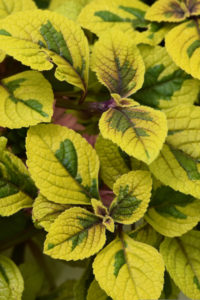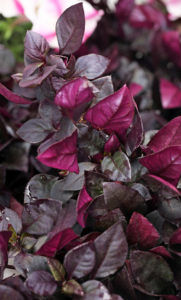
Culture Report: FanciFiller Program
The FanciFiller program is a concept from Westhoff that intends to draw attention to the hardest working, but often underappreciated, plants in our industry: The Fillers.

In a mixed combination, one of the most basic formulas is Thriller, Spiller and Filler. Thrillers, as the name implies, are the standout plants in the comb — the striking, novel or beautiful item that draws the eye.
The Spiller is the component that creates a dramatic cascade of flowers down the sides of the container, for epic hanging baskets or noble patio planters. Many of the most popular plants in our industry are Spillers (petunias, calibrachoa, bacopa, scaevola, etc.) and Thrillers are the star of the show; so when it comes time to finish the combination, the humble, yet critically important Filler steps in to finish the combo.
The Filler is the plant that ties it all together, bringing texture and habit that unite the other two components into a true, balanced combination. However, this role, as important as it may be, is sometimes relegated to plants that simply fill in the gaps. With an increased focus on screening new plants, breeding in classic genera, and selecting robust, high-performance plants, Westhoff is reinventing the concept of Filler plants.
The journey began several years ago when Westhoff began to introduce a few high-interest foliage items, specifically helichrysum ‘Silverstar’. The success of this plant illustrated there is a need for high-quality foliage interest plants for combinations. This led to several more introductions: lysimachia ‘Karat’, satureja ‘Indian Mint’ and alternanthera ‘Choco Chili’. With the introduction of four new foliage interest items for 2019/2020 — lysimachia ‘Sunburst’, artemisia ‘Sea Salt’ (pictured at top), didelta ‘Silver Strand’ and plectranthus ‘Guacamole’ — the FanciFiller program was born.

CULTURE
Although the FanciFiller program is made up of many plants, there is surprisingly uniform plant culture among the varieties. Since they were selected for use in combinations with other plants, their production fits in with most growing schedules and environments.
Some unifying characteristics are they are grown primarily for their foliage, they are all sun and heat tolerant, and they all prefer to dry, not to wilt, in between watering, making them easy to grow and for consumers to care for. Culturally, I split them between non-silver foliage and silver foliage.
PROPAGATION
The non-silver foliage items do not need much assistance during propagation, typically rooting freely under standard propagating conditions in the first five to seven days. Once rooting is initiated, mist can gradually be reduced, eventually eliminated after 10 to 14 days.
The silver foliage items are a bit slower to root and more sensitive in propagation; specifically, they prefer to not retain water on the leaf surface for extended periods. Maintaining a high humidity environment is critical, initially, but reducing this as quickly as possible will help to maximize success. These also prefer a rooting hormone, typically KIBA at 100 ppm, to aid in rooting speed and uniformity.
A pinch in propagation is recommended for all the FanciFillers, once roots have hit the sides of the cell, and any PGRs used should be extensively trialed before treating your entire crop.
FINISHING
FanciFillers are very easy to finish in either a 4-inch pot or in a mixed combo. Maintain moderate levels of fertility, 0.6 to 0.9 EC, with a constant 100- to 15-ppm nitrogen feeding regime, and a pH of 5.8 to 6.5. PGR use for height control is not recommended without trialing, but height control can be gained with watering practices. Also, an additional pinch/shear will result in fuller plants, without sacrificing vigor.
While some of the FanciFillers are quite cold tolerant and suitable for fall combinations, warmer conditions will lead to more rapid growth, so it is recommended to maintain day temperatures between 65 and 68° F and night temperatures of 62 to 65° F. Typically seven to nine weeks is all that is needed to finish smaller pots from a standard 102 liner, or faster under summer conditions.
Specific Variety Characteristics
Alternanthera ‘Choco Chili’ – Dark foliage is shade tolerant but gets darker in full sun. Its semi-trailing habit makes it an ideal combination component.
Artemisia ‘Sea Salt’ (NEW) – Silver foliage and an upright/mounding habit. Very cold tolerant.
Didelta ‘Silver Strand’ (NEW) – Silver, velutinus foliage begs to be touched. True mounding habit.
Helichrysum ‘Silverstar’ – Finely textured, silver foliage, along with ample vigor make this plant a must have for large, vigorous combination planters.
Lysimachia ‘Karat’ – Dramatic gold foliage that trails sharply over container edges. Very cold tolerant.
Lysimachia ‘Sunburst’ (NEW) – Robust trailing plant with deep green leaves and contrasting, burgundy midrib.
Plectranthus ‘Guacamole’ (NEW) – Gold leaves with irregular splotches of green along the midrib. Mounding habit.
Satueja ‘Indian Mint’ – Sprawling, trailing foliage with the sharp, crisp scent of mint. The perfect amount of cool for hot summer combos.









 Video Library
Video Library 


















